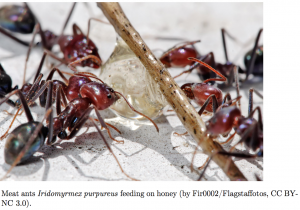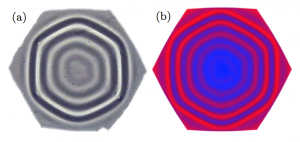Many thanks to my co-authors, Octavio Albarran, Desi Todorova and Lucas Goehring
You can find the full text on the Arxiv arXiv:1806.03718
Shells, when confined, can deform in a broad assortment of shapes and patterns, often quite dissimilar to what is produced by their flat counterparts (plates). In this work we discuss the morphological landscape of shells deposited on a fluid substrate. Floating shells spontaneously buckle to accommodate the natural excess of projected area and, depending on their intrinsic properties, structured wrinkling configurations emerge. We examine the mechanics of these instabilities and provide a theoretical framework to link the geometry of the shell with a space-dependent confinement. Finally, we discuss the potential of harnessing geometry and intrinsic curvature as new tools for controlled fabrication of patterns on thin surfaces.









